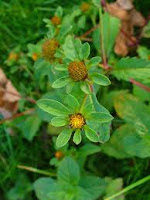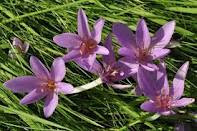 |
| autumn gentian |
AUTUMN GENTIAN, GENTIANELLA AMARELLA AND FIELD GENTIAN, GENTIANELLA CAMPESTRIS
The autumn gentian and the field gentian are both native to Europe and the British Isles . The autumn gentian was also known as Bitterroot, Felwort and Baldmony, while the field gentian was also called Bitterroot and Felwort. The autumn gentian is blue-purple in colour and has flowers that look like blue stars. The field gentian can be a variety of colours, but is usually a dull purple colour, although it can be pink or lilac or white.
 |
| field gentian |
The autumn gentian flowers between August and the end of September, producing seeds in September and October, while the field gentian flowers between June and August. These flowers were once classed as a relative of the Buck- or Bogbean, but that has recently been moved out of the Gentianaceae family.
Both these gentians have been employed for the same medicinal purposes, which is why they are together in this post. The part used for medicine is the root and this has been used to get rid of intestinal worms, and as a digestive aid and for any problems relating to the digestive system, including to perk up the appetite.
Perhaps above all in the past it was used as a tonic for those who were weak after a debilitating illness, as it was believed that a tonic of gentian roots would help the patient recover strength and appetite.
 |
| autumn gentian |
Some believe that the roots of plants which have not flowered that year are the most potent as regards their medicinal properties.
In the Bach flower remedies, gentians are used to cure feelings of doubt, depression and discouragement and are said to be mood enhancers and help the patient have a positive attitude to life.
The English herbalsit, Nicholas Culpeper, writing in the 17th century had this to say about these native British gentians:-
 |
| field gentian |
“Government and virtues. They are under the dominion of Mars, and one of the principal herbs he is ruler of. They resist putrefactions, poison, and a more sure remedy cannot be found to prevent the pestilence than it is; it strengthens the stomach exceedingly, helps digestion, comforts the heart, and preserves it against faintings and swoonings. The powder of the dry roots helps the biting of mad dogs and venomous beasts, open obstructions of the liver, and restores an appetite for their meat to such as have lost it. The herb steeped in wine, and the wine drank, refreshes such as be overweary with traveling, and grow lame in their joints, either by cold or evil lodgings; it helps stitches, and griping pains in the sides; is an excellent remedy for such as are bruised by falls; it provokes urine and the terms exceedingly, therefore let it not be given to women with child. The same is very profitable for such as are troubled with cramps and convulsions, to drink the decoction. Also they say it breaks the stone, and helps ruptures most certainly: it is excellent in all cold diseases, and such as are troubled with tough phlegm, scabs, itch, or any fretting sores and ulcers; it is an admirable remedy to kill the worms, by taking half a dram of the powder in a morning in any convenient liquor; the same is excellently good to be taken inwardly for the king's evil. It helps agues of all sorts, and the yellow jaundice, as also the bots in cattle; when *kine are bitten on the udder by any venomous beast, do but stroke the place with the decoction of any of these, and it will instantly heal them.” (*kine=cows)














































